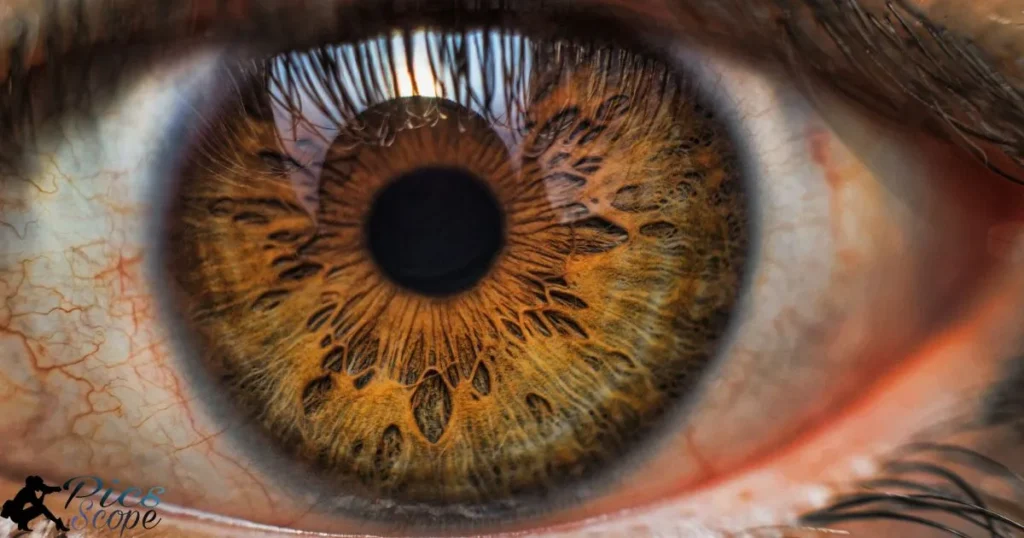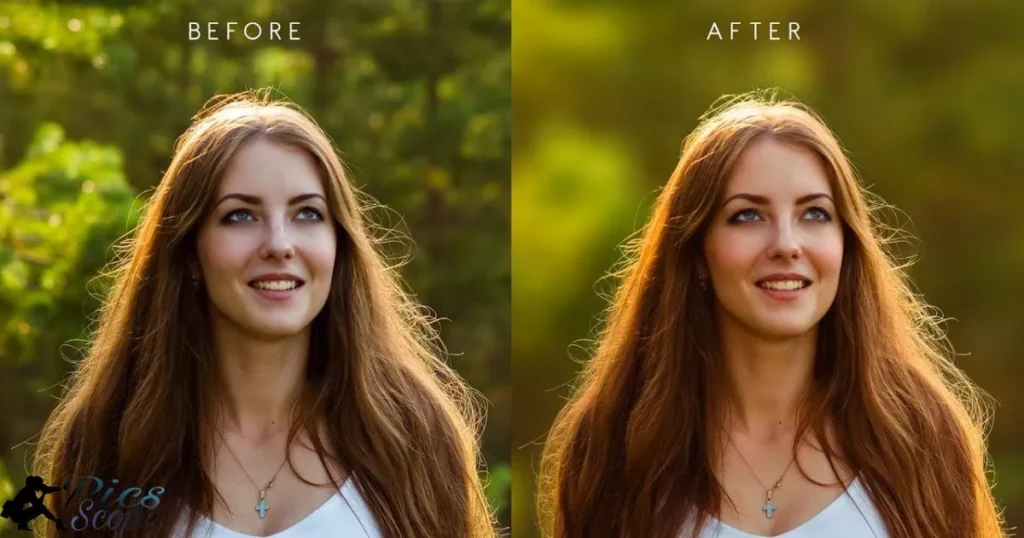The seven elements of photography are light, line, shape, form, texture, color, and perspective. These elements are the basics that every photographer uses to visually communicate with their photos.
“What Are The 7 Elements Of Photography?” This question has been asked by many amateur and professional photographers alike. Learning these fundamental photo elements is key to improving one’s visual communication skills with a camera.
The seven elements provide a useful framework for photographers to think about how to intentionally design photographs. Considering elements like line, shape, and perspective can enhance composition and artistic expression. Command of these basics allow photos to more effectively convey emotions, ideas and tell visual stories.
What Are The 7 Elements Of Photography?
Light is one of the most fundamental elements of photography. It allows photographers to capture images and affects the look and feel of photographs.
There are three properties of light that photographers can manipulate – direction, quality and color. Changing these properties changes the visual impression and story a photo conveys.
Light Affect Photography
Good lighting is essential for compelling photos. Different light qualities like hard, soft, and diffused lighting impact the scene in various ways. Hard lighting like midday sun can create shadows and highlight textures while soft window light may diffuse small imperfections.
The direction and angle of the light source also significantly impacts the photo. Front lighting from above can create harsh shadows where side or back lighting may be more flattering to textures and form. Learning to recognize and work with various lighting conditions improves photography.
Photographers Use Light Effectively
When taking portraits, photographers can utilize reflectors or small flashes to fill in shadows on faces and make expressions clearer. Continuously adjusting the lighting setup is key to bringing out the best in the subject.
For landscape photos, scouting locations during ideal lighting hours like early morning or late afternoon is recommended. The warmer, lower angle of the natural light enhances colors and contrasts. Photographers can also move around to find the best perspective for the light direction.
Makes A Good Lighting Condition For Photography
Most photographers agree that diffuse, soft light is ideal for general photography. Harsh shadows are avoided while textures and colors remain nuanced. Overcast days provide this type of balanced, even lighting.
For studio work, large softboxes, umbrellas or reflective panels help distribute the light source more broadly across the subject. Backlighting or side lighting may be employed to introduce some modeling without stark contrast.
Are The Different Types Of Light In Photography
| Type of Light | Description |
| Continuous Lighting | Lights that remain constantly lit like household lamps or video lights. Allow adjusting brightness but not freezing motion. |
| Flash Lighting | Strobe lights that illuminate briefly to freeze motion. Useful for capturing motion but do not allow adjusting brightness. |
| Ambient Lighting | Existing natural or artificial light sources like sunlight, room lights or sky glow. Adds realism but cannot be adjusted, fluctuates throughout the day. |
| Hard Light | Direct, shadow-creating light source like overhead sun. Highlights textures and details but creates harsh shadows. |
| Soft Light | Indirect, diffuse light that fills in shadows for a soft, even lighting effect. Can be created with sheer curtains, diffusers or reflects. |
| Natural Light | Daylight from the sun, moon or clouds. Color and brightness change throughout the day. Requires photographic techniques to optimize. |
Photographers Leverage Available Light
When ambient light is the primary source, careful consideration of the surroundings helps maximize it. Photographing near windows, Get Into Photography patios or shaded areas introduce soft, directional light. Reflective surfaces like walls canbounce lacking onto shadows.
Shooting during the “golden hours” of dawn and dusk creates a warm, directional glow that flatters portraits and landscapes. Filters and lens aperture adjustments may be needed to compensate for lower light levels at these times.
Elements of a Photograph
In a photograph, several elements work together to create a compelling image. These include composition, lighting, color, and subject matter. Composition refers to how the elements within the frame are arranged, while lighting sets the mood and highlights details. Color adds depth and emotion, while the subject matter gives the photo its focus and meaning.
Understanding these elements allows photographers to craft visually captivating images. They can manipulate composition to lead the viewer’s eye, use lighting to create drama or softness, play with color to evoke specific emotions, and carefully select subjects to convey stories or messages.
Which Lines Guide Our Eyes In Photography?

Leading lines like roads, fences and streams are a classic composition technique to subtly direct the viewers eye through a photograph. Curved lines can produce a more fluid visual flow than straight ones.
Horizontal and vertical lines establish a strong underlying structure and sense of balance. Uneven horizons and lines that aren’t straight can off-balance an image and disrupt its flow, attracting unwanted attention.
Lines Be Used To Direct Attention
Diagonal lines are particularly effective at emphasizing certain areas and elements within the frame. They create a dynamic sense of movement toward the terminating point where the line ends. A well-placed diagonal line pulls a viewer’s gaze in its direction.
Repeating or contrasting lines of a similar scale, thickness and direction reinforce each other visually and emphasis complementary parts of the composition like symmetry.
Role Does Line Have In Composition
Leading lines are guides that draw a viewer’s eye through the frame in an enjoyable, coherent journey. Effective use of repeated horizontal and vertical lines creates order, structure and balance within a photograph.
Curves introduce fluidity and movement compared to straight lines. They can provide visual interest without disorienting the composition. Color, direction and termination points also impact the hierarchy and flow of lines within a photograph.
Kinds Of Lines Are Used In Photography
5 easy, short paragraphs on the different kinds of lines that are used in photography
Leading Lines
Roads, paths, fences and streams are common leading lines that guide the viewer’s eye through an image in an intentional direction. They subtly steer attention along their path.
Implied Lines
The transition between colors or textures can form implied lines, even when there is no clearly defined line physically present. Changes between grass and sky or land and sea imply lines.
Silhouettes
The hard edges created when a subject is backlit form clear, defined lines. Silhouettes of trees, buildings or people against the sky utilize these strong linear forms.
Architectural Lines
Buildings contain many intentional straight lines in their structures like corners, edges and angles. Urban photography incorporates these linear architectural features.
Organic Lines
Natural elements frequently contain curved or meandering organic lines. Waves rolling onto shore, winding rivers, and curving plant stems introduce lines with a fluid, less rigid quality.
Lines Impact Visual Flow
The placement and type of lines greatly influence how the eye interprets and navigates a photograph. Straight lines project confidence and stability compared to curved or diagonal ones which evoke fluidity and movement.
Terminating lines encourage the eye to follow their path and pause where they end, anchoring compositions. Overlapping or intersecting lines with varying directions and weights create visual interplay and hold interest as the eye roams around exploring relationship
What Shapes Convey Through Photography?
Shapes are fundamental visual forms that impact composition and elicit emotion. Soft rounded shapes imply warmth while sharp angular lines project strength or tension.
Recognizing basic geometric and organic shapes allows photographers more intentionally frame evocative shapes within the viewfinder. Placing subjects off-center or against complementary backgrounds complements inherent subject silhouettes.
Shapes Guide Emotional Response
Circles often symbolize wholeness, infinity or harmony while ovals can depict femininity. Squares projects stability but may seem static. Triangles carry an active sense of balance when pointing up or tension when pointing down.
Organic leaf or petal shapes reference nature and feel calming. Animal or cloud silhouettes elicit feelings related to that creature through their distinctive profile shapes on the film plane.
W=Simple Geometric Shapes Are Used Most
The primary simple geometric forms found across compositions include circles, squares, triangles, and rectangles. These basic shapes provide the fundamental blocks for more complex organic shapes to be derived from them within the visual framework.
Their incorporation brings balance, order and visual appeal. Overlapping or nesting different geometric shapes creates layered depth and point of visual interest in an image.
Impact Do Organic Shapes Have
Organic, free-flowing shapes commonly found in nature like clouds, waves or curled leaves feel relaxing, artistic or provide visual complexity compared to rigid geometrics. Organic textures feel soft, natural and non-man-made.
Filling the frame with natural organic forms induces calming emotion through their undulating, less defined structures. Conveying a sense of growth through gentle curved petals or tree branches appeals to our sentiments.
Shapes Be Used To Create Balance
Symmetrical and asymmetrical shape placement affects compositional equilibrium. Centered symmetric subjects impart classic balance while off-center asymmetric alternations create visual tension resolved by complimentary shape counterparts elsewhere in the frame.
Overlapping or bordering shapes of varying sizes introduce visual weight that must be counterbalanced elsewhere through contrasting sizes or tonal values to achieve poise. Empty negative space acts as a shape itself that contributes balance.
Does Form Hold Significance In Photography?
Beyond two-dimensional shape, three-dimensional form influences how light falls upon surfaces creating highlights and shadows. Sculptural form offers photographers more texture, substance and realism to work with than flattened shapes alone.
Complex natural and architectural forms hold intricate detail within their volumetric presence. Perspective and angles alter how form presents itself through the camera lens with height, width and depth perceived by the viewer.
Is Form Different Than Shape
While shape is a two-dimensional visual object defined by its outline, contours or silhouette – form encompasses the three-dimensional volume, mass and space an object occupies. Form implies depth, a sense of the object existing in real space rather than flat on a page.
Shadows, textures and crevices projected by lighting across irregular or projecting surfaces delineate solid form and adds realism over simplified outlines alone. Forms pop from their background more vividly.
Determines The Forms Within A Photograph
Lighting conditions, perspective, foreground elements and surrounding negative space contribute to the sense of form. Front lighting renders shapes clearly while backlighting emphasizes silhouettes. Low angles elongate dimensions versus high viewpoints foreshorten elements.
Framing tightly on an intricate subject isolates intricate details while wider shots place objects in a more contextual environment contributing to their perceived volume and mass within the frame.
Form Be Manipulated Through Framing
Tight framing crops out setting yet magnifies textures. Wider angles provide environmental context at the cost of diminishing intricacy. Raising or lowering the camera transports viewers ‘eye level’ perspective of the subject and alters how volume is projected on film.
Zooming focuses attentionwhile distant shots minimize individual elements. Shooting horizontally versus vertically transforms the orientation of forms within the frame boundaries. These adjustments impact how shapes present themselves photographically.
Role Does Depth Of Field Play In Form
Shallow depth of field isolates the plane of focus on one dimensional layer while deep focus captures full three-dimensional forms. Out of focus areas provide elliptical shapes enhancing bokeh effects often found pleasing to the eye.
Varying aperture exploits the layering attributes of specific planes falling within the zone of sharpest focus versus softened blurrier ones front and behind it. This sculpting with focus emphasizes formal attributes.
How Do Textures Enhance Photographic Style?

Texture adds visual interest, tactility and identity to photography. Rippled waters, peeling wood or woven fabrics showcase varied surface compositions and grains that draw viewers eye exploring intricacy.
Close-ups isolate exceptional minute textures that intrigue. Macrophotography underlines extraordinary geometries within nature’s patterns like insect wings or rose thorns magnified. Organic textures feel natural and complement landscape photography.
Textures Commonly Appear In Nature Photography
Textures ranging from soft petals to craggy tree bark are bountiful in nature. Water textures from waves to dripping fluids shift wonderfully. Leaves encompass veined, smooth and spiked surfaces. Feathers and fur showcase intricate patterns across their varied coatings and fibers.
Mineral and geological textures hold microscopic detailing visible through specialized macro lenses. Different terrains from sandy beaches to rocky cliffsides demonstrate diverse textures.
Textures Add Realism Or Fantasy
Sharp textures feel grounded and realistic depicting substance by revealing physical tangible structures. Soft, fuzzy or abstract textures project an ethereal dreamlike quality shifting the style towards fantasy or surrealism depending on context and lighting.
Overly sharp high definition renders everything highly tactile while deep blur obstructs textures for a more impressionistic effect. Playfulness with focus explores varied texture styles suited to diverse subjects and intended atmospheres.
Camera Techniques Reveal Texture
Telephoto macro lenses capture minute surface nuances normally invisible. Selective focus isolates one textured plane. Raking or directional studio lights accentuate textures. Slow shutter panning blurs sweeping textures for interest.
Tripod mounted cameras permit long exposures softening flowing textures without compromising sharpness elsewhere. Filters enrich textures through specialized effects like cross processing or selective grain increases.
Ways Do Textures Affect Mood
Rough, gritty textures feel tactile and grounded. Delicate,fuzzy textures project softly. Regular geometrical textures like woven patterns feel organized while organic convoluted surfaces feel natural and calming.
Smooth pure colors depict simplicity but lack visual interest while varied blended or layered textures hold the eye exploring substance. High contrast textures feel graphic and stylized versus low contrast grainy views with softer sentiment.Texture impacts how images make one feel emotionally.
Frequently Asked Question
How Does Understanding Elements Improve Photography?
Learning to recognize and apply the core building blocks allows more intentional design of compelling photographic compositions.
Which Element Is Most Important?
While light is fundamental, a skilled photographer leverages all seven elements—line, shape, form, texture, color, and perspective—together to maximum impact.
When Should Elements Be Considered?
Photographers benefit from conceptualizing elements in the viewfinder before shooting and in post-production when editing images for consistent application.
Is Following Rules Necessary?
While the elements provide useful framework, rules are meant to be explored creatively. Unique expression comes from experimenting and putting an individual spin on formal techniques.
How Long Does It Take To Learn Elements?
While a lifetime could be spent perfecting craft, committed amateur photographers can gain strong foundational understanding of elements within their first year of dedicated study and practice. Continual refinement helps work feel more polished.
Conclusion
The seven elements of photography – light, line, shape, form, texture, color, and perspective – constitute the basic building blocks with which all visual communication is constructed. Whether intentionally or intuitively, photographers have incorporated these elements into their compositions since the inception of the medium. Mastering the thoughtful application of elements allows photographers more intentional design of compelling photographic works that effectively engage viewers.
While experience and intuition play large roles, taking time to learn and practice recognizing how each element functions within images provides photographers powerful conceptual tools that can be leveraged for years. With experience, an intuitive understanding is gained allowing more liberal experimentation. Continued study and application of the elements keeps photographic vision and craft evolving to new levels of visual storytelling.







